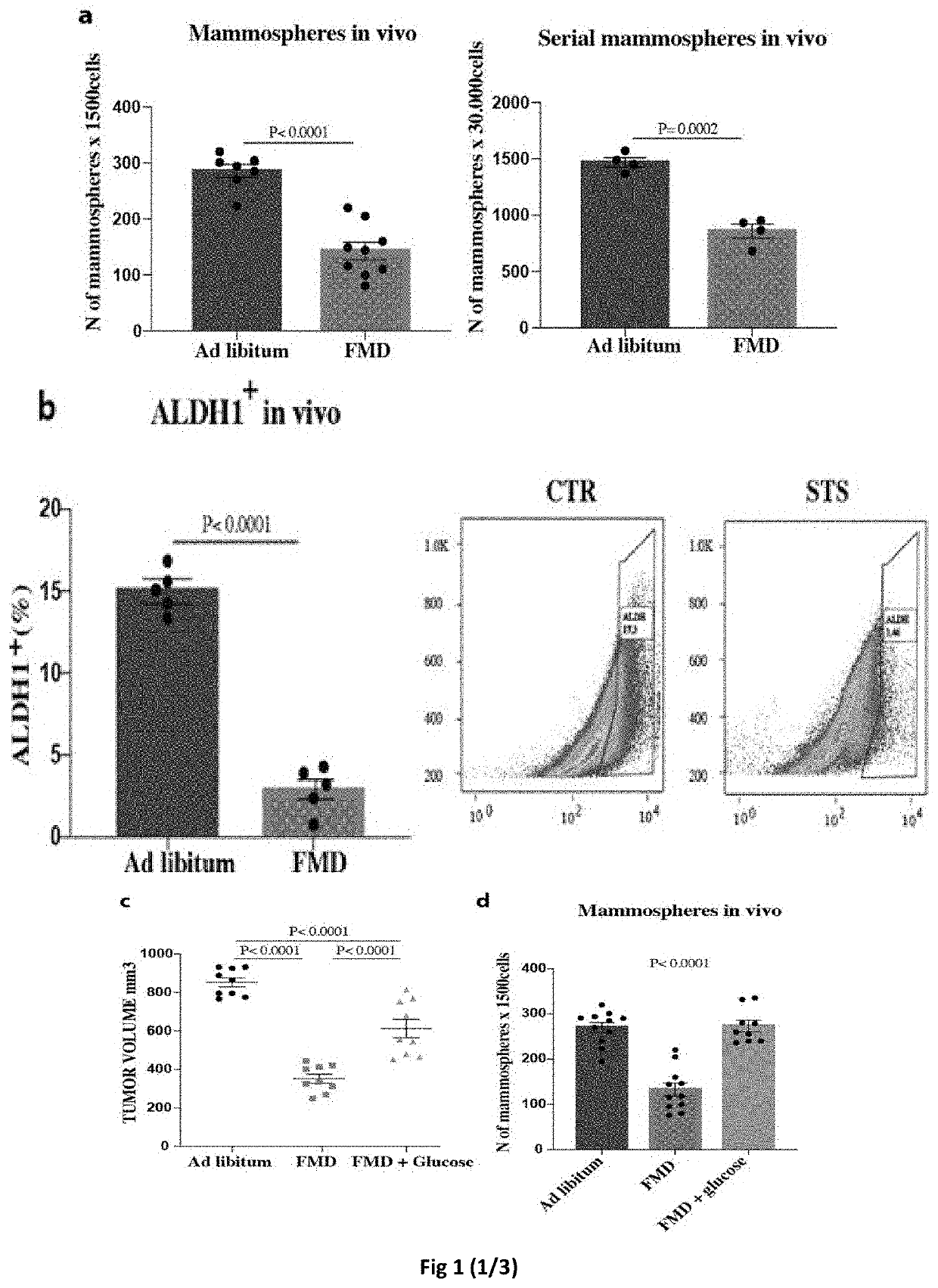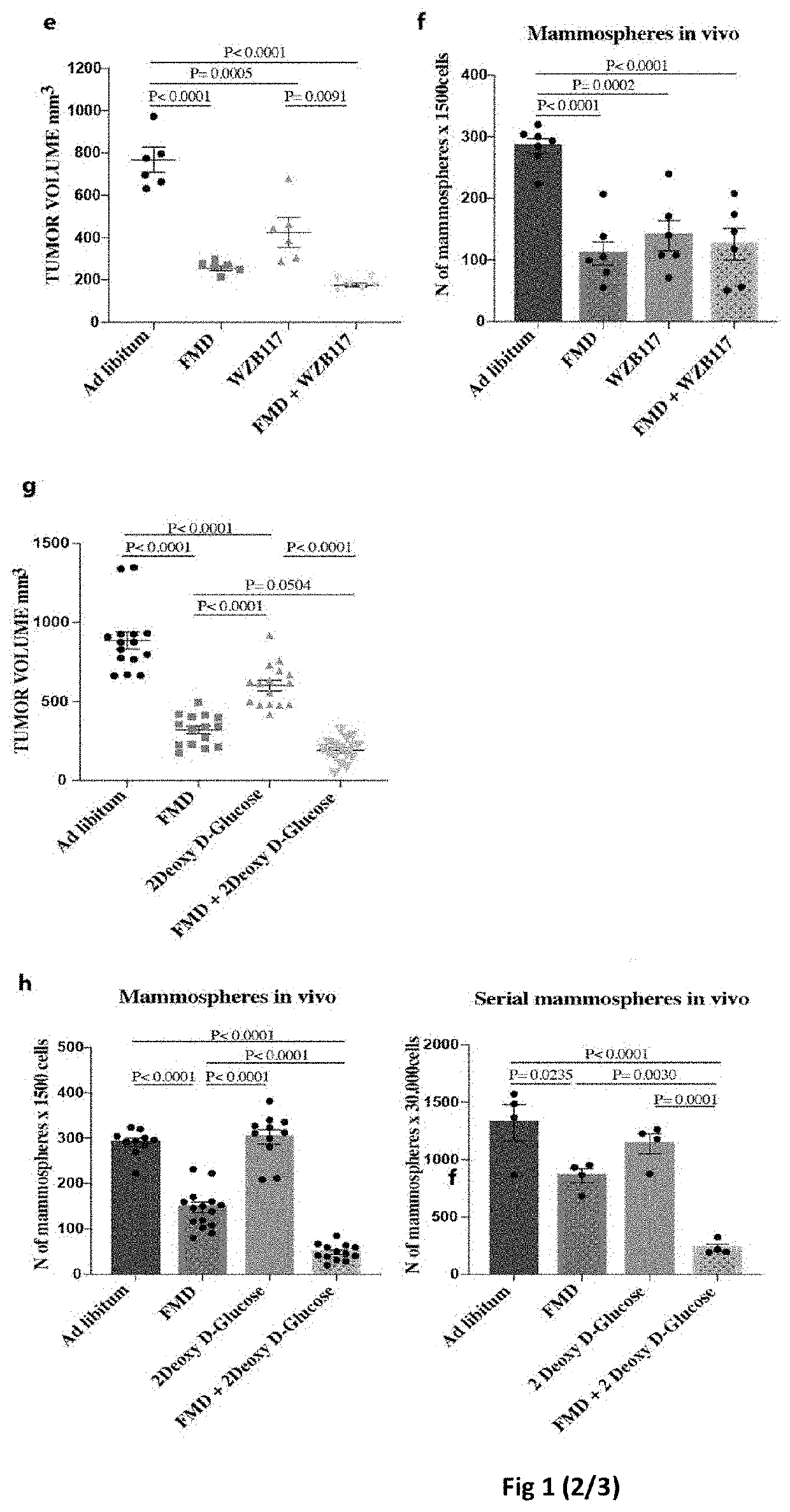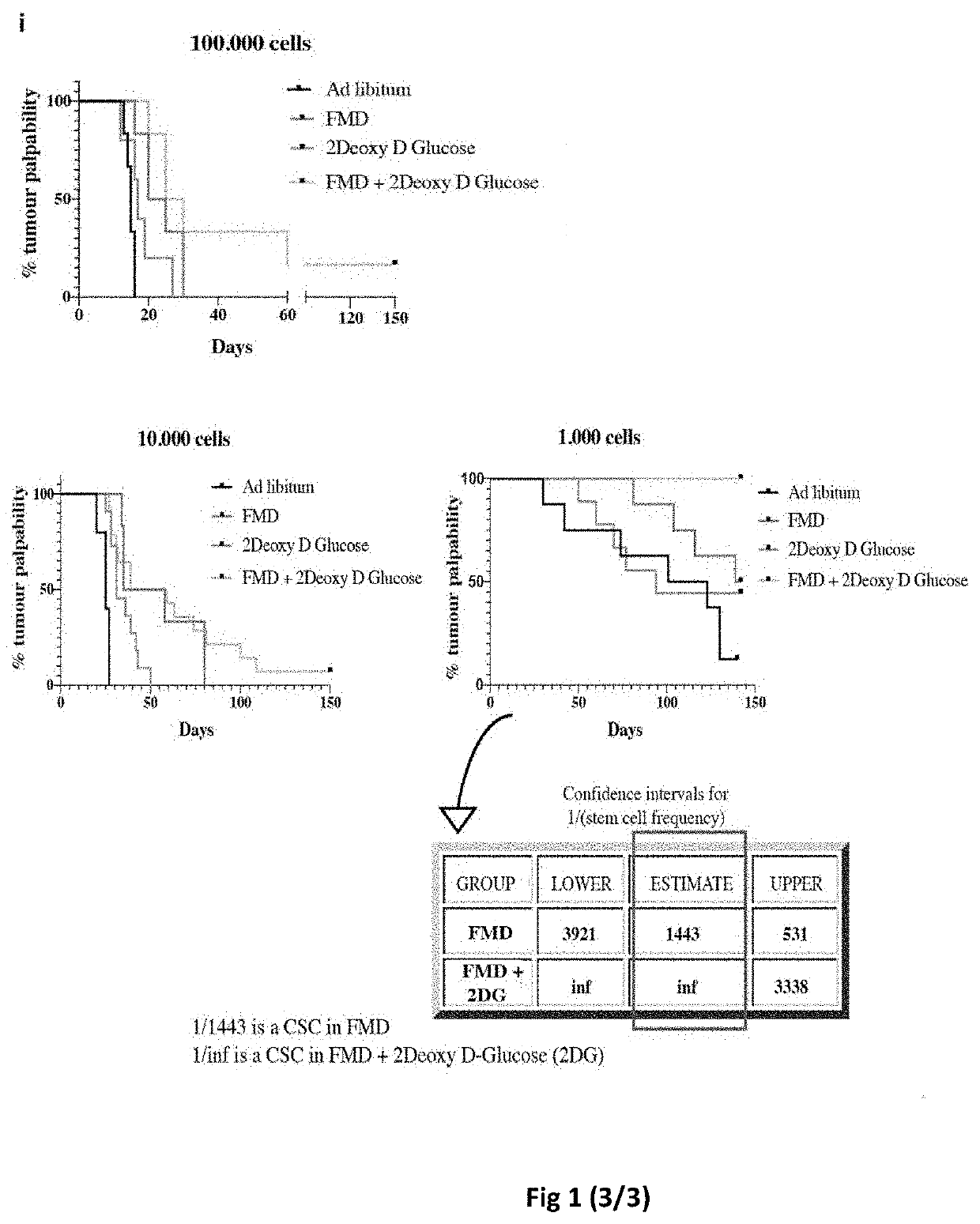Reduced caloric intake and anticancer agents for the treatment of cancer
a cancer and caloric intake technology, applied in the field of cancer caloric intake reduction and anticancer agents, can solve the problems of reducing the damage to normal cells and systems, reducing the damage, but not completely preventing, and poor prognosis of the vast majority of advanced tnbc patients
- Summary
- Abstract
- Description
- Claims
- Application Information
AI Technical Summary
Benefits of technology
Problems solved by technology
Method used
Image
Examples
example 1
MD Reduces Human TNBC Stem Cells by Lowering Glucose Levels
[0155]In the in vitro human TNBC SUM159 model, fasting / FMD (low-serum, low-glucose conditions, referred to as Short-Term Starvation, STS) decreased mammosphere generation and volume, thus indicating an impact on TNBC self-renewal capacity (FIG. 5a). STS reduced also the proportion of CD44highCD24low cells, which are enriched for TNBC CSCs, compared to CTR conditions (FIG. 5b).
[0156]Consistent with in vitro results, cycles of FMD greatly reduces tumor progression and tumor size, associated with increased expression of Caspase3 (FIG. 5c, d). Moreover, when compared to ad libitum (AL) diet, FMD cycles decreased the number of ex vivo primary mammospheres, reducing their serial propagation, and the percentage of cells expressing aldehyde dehydrogenase 1 (ALDH1), an enzyme highly expressed in TNBC and associated with CSCs properties. (FIG. 1a, b). To further assess the effect of FMD on CSCs, a limiting dilution assay injecting tum...
example 2
ine Glycemia is Associated with Increased Survival of Patients with Metastatic TNBC
[0159]To confirm data in a syngeneic mouse TNBC model, the effect of fasting / FMD in 4T1 mouse transplants in immuno-competent BALB / c female mice was tested. Notably, four FMD cycles delayed tumor progression, reduced mammospheres number as well as the percentage of CD44highCD24low subpopulation compared to AL conditions, confirming the effect of FMD on TNBC stem cells, using a different cell line (FIG. 2a, FIG. 7a-c). Moreover, consistent with data in human TNBC, supplementing 1 g / l of glucose reversed the STS effect on 4T1 sphere formation (FIG. 2b). Inventors also evaluated the effect of 2DG in combination with FMD and show that 2DG potentiated the effect of FMD both in delaying tumor progression and in reducing CSCs, confirming the results obtained with the SUM159 model (FIG. 2c, d, FIG. 7d).
[0160]To determine whether the findings in mice may be relevant to TNBC progression in humans, the relevance...
example 3
PKA Activation Reverses STS Dependent Mammosphere Reduction.
[0161]Next, the mechanism through which glucose depletion sensitizes CSCs was investigated. It has been previously shown that prolonged fasting reduces the activity of protein kinase A (PKA) in different types of normal cells13,16, an effect which is mediated in part by reduced glucose availability17. Interestingly, PKA inhibition results in the downregulation of human kruppel-like factor 5 (KLF5), a potential therapeutic target for TNBC18 through glycogen synthase kinase-3β (GSK33) phosphorylation. KLF5 is reported to promote TNBC cell proliferation, survival, migration and invasion; moreover, it directly regulates the expression of some stemness associated genes, including Nanog and Oct4 (Shi P et al, Cell Discovery, 2017, 3, 17010). Therefore, KLF5 can be considered a potential target for TNBC stem cells. PKA inhibition is reported to downregulate KLF5; in fact, when PKA is downregulated, GSK30 phosphorylates KLF5 leadin...
PUM
| Property | Measurement | Unit |
|---|---|---|
| concentration | aaaaa | aaaaa |
| concentrations | aaaaa | aaaaa |
| concentration | aaaaa | aaaaa |
Abstract
Description
Claims
Application Information
 Login to View More
Login to View More - R&D
- Intellectual Property
- Life Sciences
- Materials
- Tech Scout
- Unparalleled Data Quality
- Higher Quality Content
- 60% Fewer Hallucinations
Browse by: Latest US Patents, China's latest patents, Technical Efficacy Thesaurus, Application Domain, Technology Topic, Popular Technical Reports.
© 2025 PatSnap. All rights reserved.Legal|Privacy policy|Modern Slavery Act Transparency Statement|Sitemap|About US| Contact US: help@patsnap.com



